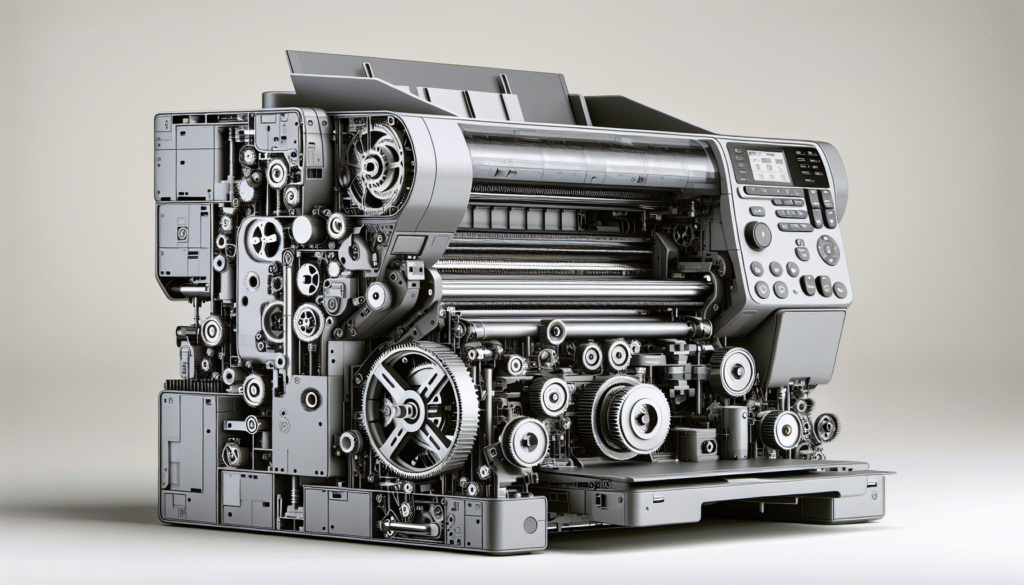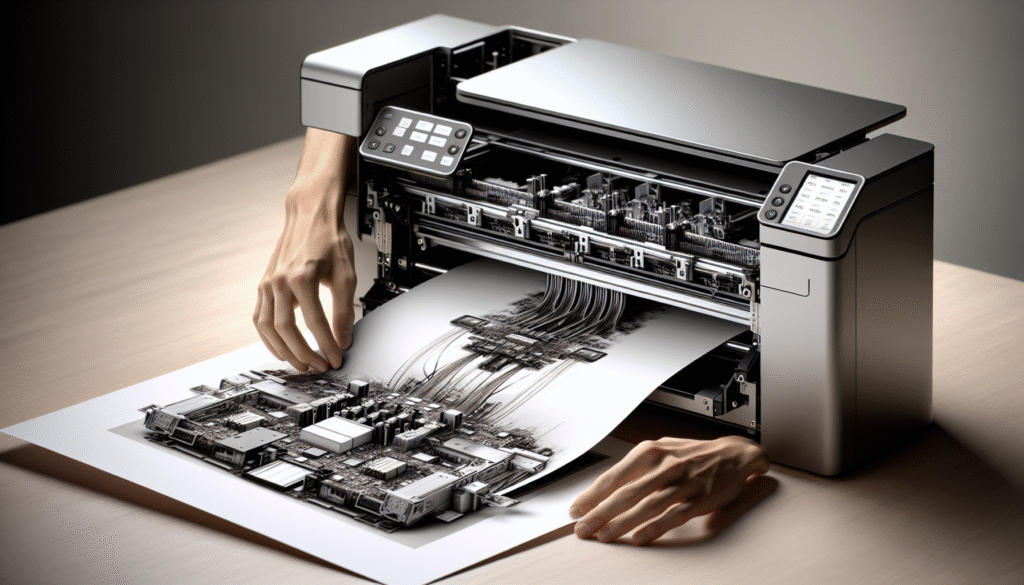Have you ever stood in the middle of an electronics store, staring at the endless rows of printers, and wondered which one would bring harmony to your printing needs? We find ourselves in that very scenario more often than we’d like. The world of printing is a jungle, bustling with different types of printers, each with its own unique flair. Today, we will swing through the trees of this jungle to compare two major types: dye-sublimation and inkjet printers. Choosing between these two could be like choosing a lifelong dance partner, as they each have their own rhythm and style. So, let’s embark on this colorful journey together!

Understanding the Basics of Printers
Before we compare these two contenders, let’s lay down the basics. Getting a solid grasp on this will guide us toward making a more informed choice. After all, making a savvy decision is like nailing a perfect dance step—it feels good and looks even better.
What is a Dye-Sublimation Printer?
Dye-sublimation printers are a lesser-known but exceptional member of the printer family. They work by using heat to transfer dye onto materials such as cards, paper, or fabric. It’s almost magical the way colors blend smoothly, producing vivid, professional-quality prints. Don’t we all love a little magic in our lives? Especially when it can turn holiday snapshots into cherished keepsakes.
What is an Inkjet Printer?
Inkjet printers are the familiar faces of the printing world. They are kind of like that trusty friend who’s always there when you need them. Using liquid ink sprayed through tiny nozzles, these printers create images by placing droplets onto the paper. This method allows for vibrant color production and clear text quality. Inkjet printers are the go-to option for their versatility and reliability, akin to that perfect pair of jeans in our wardrobe.
The Showdown: Comparing Dye-Sublimation and Inkjet Printers
Our stage is set, the lights are on, and it’s time for the performance of a lifetime! Let’s dive into the showdown, breaking down these two types of printers based on several key aspects to help us determine which is the ultimate print champion in varied circumstances.
Print Quality and Color Brightness
When it comes down to print quality and vibrancy, dye-sublimation printers often take the crown. With their heat transfer process, they allow for continuous tones and stunning color gradation. It’s like having a seasoned artist paint a portrait, ensuring every color transition is seamless. This makes them particularly appealing for printing photographs or high-quality images.
Inkjet printers, on the other hand, are no slouch either. They might not achieve the continuous tones like dye-sublimation, but they excel with vibrant color and sharp text. For those of us who need an all-rounder that can deliver everything from school reports to stunning graphics, inkjet is the way to go.
Cost of Printing
Now, let’s talk about the dollars and cents. Who doesn’t love to know they’re getting the best bang for their buck?
| Printer Type | Initial Cost | Cost Per Print | Longevity of Print |
|---|---|---|---|
| Dye-Sublimation | Higher | Moderate | Long-lasting, resistant to fading |
| Inkjet | Lower | Can be cheap or high | Susceptible to fading, dependent on ink quality |
Dye-sublimation printers tend to have a higher initial cost, but they often make up for it with moderate printing costs and long-lasting prints that resist fading. It’s perfect for those cherished family photos or display pieces.
Inkjet printers generally come with a lower price tag upfront, making them accessible for home and office use. However, their cost per print can vary considerably, depending mostly on the type of ink and paper used. Over time, ink costs can accumulate, especially with heavy use.
Speed and Efficiency
In our fast-paced world, speed and efficiency are more than just qualities; they are necessities. So, which printer should be our spirit animal in the race for time?
Dye-sublimation printers offer speed for photo printing, churning out prints relatively quickly when working with sublimation paper. But, when switching between different materials, they might slow down, as they need time to cool before changing media types.
In contrast, inkjet printers generally offer faster turnaround times for regular document printing. It’s like having a personal assistant who’s adept at multitasking, making them suitable for varied tasks, especially in busy office settings.
Print Longevity and Durability
We all want our memories to last, whether they are printed out in albums or displayed proudly on walls. But how do these prints stand the test of time?
Dye-sublimation prints are highly durable, resisting water, fading, and scratches. They stand like youthful immortals in the face of sunlight and other environmental factors.
Inkjet prints, familiar and friendly, are susceptible to environmental factors like water and sunlight, which can lead to fading over time. However, the use of high-quality inks and papers can significantly enhance durability.

Practical Applications and Usability
What’s the use of a showstopper routine if it doesn’t fit into our lives practically? So let us consider how these printers integrate into our daily routines.
Home and Personal Use
For home use, it fiercely depends on what we want to achieve. If printing family albums, holiday snaps, or small DIY crafting projects is our primary concern, a dye-sublimation printer would bring our images to life gloriously.
However, if our printing needs range from homework assignments to work presentations, the inkjet printer, with its versatility and reliability, will be our dependable ally.
Business and Professional Use
In professional realms, particularly those involved in photography, marketing, or designing, dye-sublimation printers offer that extra sparkle and pop, making products stand out.
For general office documentation, advertising material layouts, or occasional high-quality image output, inkjet printers provide cost-effective and versatile solutions.
Craft and Creative Projects
For the crafty souls and artisans among us, dye-sublimation is the way to go for projects involving T-shirt printing, mugs, or other personalized merchandise. They allow us to express our creativity vividly and with precision.
Inkjet printers, however, also offer immense versatility, especially with DIY projects that require different types of printable media – from standard paper and cardstock to specialized inkjet-compatible material.
Making the Right Choice: Key Considerations
As we waltz towards the conclusion, key considerations weigh heavily in determining which printer will win our hearts. Let’s consider what aspects are most important to us:
- Budget: Think about both the initial outlay and ongoing costs. Does a higher upfront cost deter us if it means lower running costs later on?
- Print Quality Needs: Are we going for magazine-level photo quality, or do we primarily require fast and reliable document printing?
- Volume of Printing: Consider if we will be printing infrequently or in high volumes, especially when it comes to cost calculation.
- Space and Convenience: Do we have the space and tolerance for a slower but richer printer, or do we need something quick and compact?
These considerations help personalize our decision, making sure our printer is not just a tool, but an extension of our professional or personal lives.
Conclusion: The Dance of Colors and Decisions
Choosing between dye-sublimation and inkjet printers feels a bit like choosing between salsa and waltz. Both have their tempo, style, and ideal partners. Dye-sublimation mesmerizes with vivid and lasting colors, but asks for a higher commitment upfront. Inkjet printers, flexible and practical, promise ease and affordability.
We hope this tour through Printerland has sparked a clearer picture in your mind and eased some of the confusion that often surrounds the choice. Like any good dance partner, the printer we choose should complement our rhythm, support our needs, and, let’s face it, make our lives a little brighter and more colorful.
